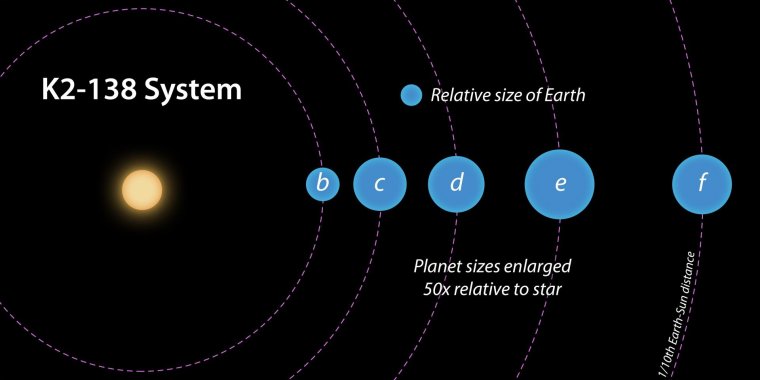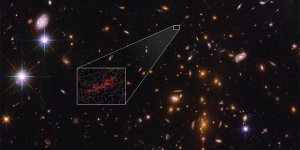| News / Space News |
Multi-planet System Found Through Crowdsourcing
A system of at least five exoplanets has been discovered by citizen scientists through a project called Exoplanet Explorers, part of the online platform Zooniverse, using data from NASA's Kepler space telescope.

This artist concept shows K2-138, the first multi-planet system discovered by citizen scientists. The central star is slightly smaller and cooler than our Sun. The five known planets are all between the size of Earth and Neptune. Planet b may potentially be rocky, but planets c, d, e, and f likely contain large amounts of ice and gas. All five planets have orbital periods shorter than 13 days and are all incredibly hot, ranging from 800 to 1,800 degrees Fahrenheit. Image credit: ![]()
This is the first multi-planet system discovered entirely through crowdsourcing.
Thousands of citizen scientists got to work on Kepler data in 2017 when Exoplanet Explorers launched. It was featured on a program called Stargazing Live on the Australia Broadcasting Corporation (ABC).
On the final night of the three-day program, researchers announced the discovery of a four-planet system. Since then, they have named it K2-138 and determined that it has a fifth planet -- and perhaps even a sixth, according to the new paper.
Another batch of 2017 Kepler data was recently uploaded to Exoplanet Explorers for citizen scientists to peer through. Astronomers have not yet searched through most of it for planets. (NASA)
YOU MAY ALSO LIKE

